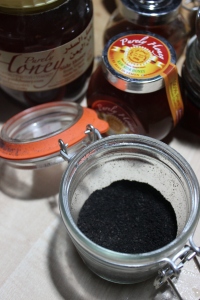It is narrated by the hadith that the Holy Prophet (pbuh) said: ‘Use the black seed because it has a relief of all diseases, but death’
Black seed is a plant. People have used the seed to make medicine for over 2000 years. It was even discovered in the tomb of King Tut.
Historically, black seed has been used for headache, toothache, nasal congestion, and intestinal worms. It has also been used for “pink eye” (conjunctivitis), pockets of infection (abscesses), and parasites.
Today, black seed is used for treating digestive tract conditions including gas, colic,diarrhea, dysentery, constipation, and hemorrhoids. It is also used for respiratory conditions including asthma, allergies, cough, bronchitis, emphysema, flu, swine flu, and congestion.
Other uses include lowering blood pressure, lowering cholesterol levels, treatingcancer, and boosting the immune system. You may read that a patent has been issued to cover the use of black seed to improve immunity, but don’t be misled. The presence of a patent doesn’t mean black seed has been shown to be effective for this use.
Women use black seed for birth control, to start menstruation, and to increase milk flow.
Black seed is sometimes used in combination with cysteine, vitamin E, and saffron to ease the side effects of a chemotherapy drug called cisplatin.
Some people apply black seed directly to the skin for joint pain (rheumatism),headache, and certain skin conditions.
In foods, black seed is used as a flavoring or spice.
How does it work?
There is some scientific evidence to suggest that black seed might help boost the immune system, fight cancer, prevent pregnancy, and lessen allergic reactions by acting as an antihistamine, but there isn’t enough information in humans yet.
Black Seed – Summary of Actions:
- Analgesic: Relieves or dampens sensation of pain.
- Anthelmintic: (Also know as vermicide or vermifuge) destroys and expels intestinal worms.
- Anti-bacterial: Destroys or inhibits the growth of destructive bacteria.
- Anti-Inflammatory: Reduces inflammation.
- Anti-Microbial: Destroys or inhibits the growth of destructive microorganisms.
- Antioxidant: Prevents or delays the damaging oxidisation of the body’s cells – particularly useful against free radicals.
- Anti-Pyretic: (Also known as ferbrifuge) – exhibits a ‘cooling action’, useful in fever reduction.
- Anti-spasmodic: Prevents or eases muscle spasms and cramps.
- Anti-tumour: Counteracts or prevents the formation of malignant tumours*
- Carminative: Stimulates digestion and induces the expulsion of gas from the stomach and the intestines.
- Diaphoretic: Induces perspiration during fever to cool and stimulate the release of toxins.
- Diuretic: Stimulates urination to relieve bloating and rid the body of any excess water.
- Digestive: Stimulates bile and aids in the digestive process.
- Emmenagogue: Stimulates menstrual flow and activity.
- Galactogogue: Stimulates the action of milk in new mothers.
- Hypotensive: Reduces excess blood pressure.
- Immunomodulator: Suppresses or strengthens immune system activity as needed for optimum balance.
- Laxative: Causes looseness or relaxation of the bowels.



Recent Comments